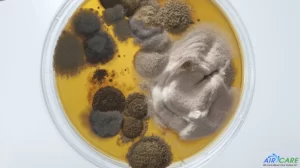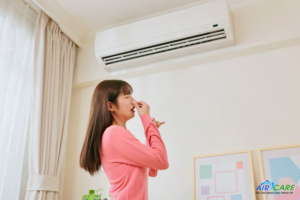Mold Mitigation for Allergies and Asthma: How to Improve Indoor Air Quality

Indoor air quality plays a crucial role in maintaining our health and well-being. However, it is often overlooked, leading to a variety of respiratory issues, particularly for individuals with allergies and asthma. One of the most common contributors to poor indoor air quality is mold. Mold can trigger allergic reactions and exacerbate asthma symptoms, making it essential to address mold growth and implement effective mold mitigation strategies. In this article, we will explore the impact of mold on allergies and asthma and provide practical tips to improve indoor air quality.
Understanding Mold and Its Impact
Mold is a type of fungus that thrives in damp and humid environments. It reproduces by releasing spores into the air, which can easily find their way into our homes. When these spores land on surfaces with moisture and organic matter, they can grow and form colonies. Mold growth is commonly found in areas such as basements, bathrooms, kitchens, and areas with water leaks or excessive moisture.
For individuals with allergies, exposure to mold can trigger a range of symptoms, including sneezing, coughing, wheezing, itchy eyes, and skin irritation. Moreover, mold can be particularly problematic for individuals with asthma. Mold spores can act as potent asthma triggers, causing increased inflammation and narrowing of the airways, leading to breathing difficulties, chest tightness, and asthma attacks.
Effective Mold Mitigation Strategies
1.)Identify and Address Moisture Sources: Mold requires moisture to grow, so it is essential to identify and address any potential sources of water intrusion in your home. Check for leaks in pipes, roofs, and windows, and promptly fix any issues. Ensure proper ventilation in areas prone to moisture, such as bathrooms and kitchens, by using exhaust fans or opening windows when cooking or showering.
2.)Monitor Humidity Levels: Mold thrives in high-humidity environments. Ideally, indoor humidity levels should be kept below 50%. Use a hygrometer to measure humidity levels and consider using a dehumidifier in areas with excess moisture. Empty and clean the dehumidifier regularly to prevent mold growth inside the device.
3.)Proper Ventilation: Proper air circulation and ventilation play a crucial role in preventing mold growth. Ensure that your home has adequate ventilation by using exhaust fans in bathrooms and kitchens and opening windows regularly to allow fresh air in. Consider installing air purifiers with HEPA filters to remove mold spores from the air.
4.)Regular Cleaning: Regular cleaning and maintenance can help prevent mold growth. Pay attention to areas that are prone to moisture, such as bathrooms, basements, and kitchens. Clean and dry surfaces regularly, and use mold-resistant products for areas that are frequently exposed to moisture. Vacuum carpets and upholstery with a HEPA filter vacuum cleaner to remove mold spores and allergens effectively.
5.)Remove Existing Mold: If you discover mold growth in your home, it is crucial to address it promptly. Small areas of mold can often be cleaned with a mixture of water and detergent or a solution of one part bleach to ten parts water. However, for extensive mold growth or if you have underlying health conditions, it is best to consult professional mold remediation experts who can safely remove the mold and prevent further contamination.
6.)Regular Inspections: Conduct regular inspections of your home to identify any signs of moisture or mold growth. Check for water stains on walls and ceilings, musty odors, or visible mold. Pay attention to hidden areas, such as behind furniture, in attics, and inside closets. Early detection can help prevent mold from spreading and causing more significant issues.
7.)Allergen-Proof Your Home: In addition to addressing mold growth, take steps to minimize other allergens that can worsen allergies and asthma symptoms. Keep your home clean and free from dust mites by washing bedding regularly in hot water and using allergen-proof covers on mattresses and pillows. Avoid using carpets, as they can trap allergens, and opt for easy-to-clean flooring instead. Regularly clean and vacuum upholstered furniture and curtains.

Conclusion
Improving indoor air quality is essential for individuals with allergies and asthma. Mold growth is a common contributor to poor indoor air quality and can trigger allergic reactions and asthma symptoms. By following the strategies outlined in this article, such as addressing moisture sources, monitoring humidity levels, practicing proper ventilation, regular cleaning, and promptly addressing mold growth, you can mitigate mold-related health risks and improve the overall indoor air quality in your home. Prioritizing a healthy indoor environment will contribute to your well-being and help you breathe easier.
Get in touch
- (610) 890-6300
- info@aircareonline.com
- https://aircareonline.com
- 1510 Gary Street, Unit 1 Bethlehem, PA 18018
- Monday - Friday: 8:30 am - 4:30 pm Evenings and Saturdays: By appointment only









